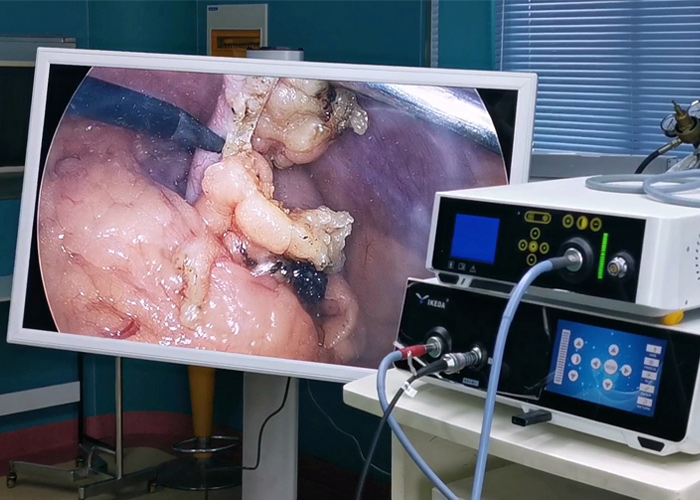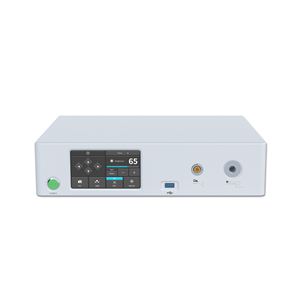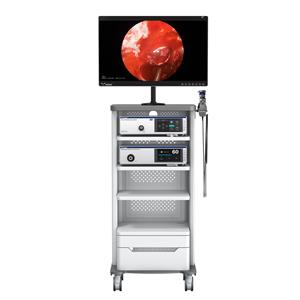Application of combined hysteroscopy and laparoscopic surgery in gynecology
With the maturity and promotion of hysteroscopy and laparoscopic technology, combined hysteroscopy and laparoscopic surgery came into being. It refers to the application of hysteroscope and laparoscope under anesthesia to diagnose and treat two or more gynecological diseases in the uterus and pelvis at the same time. Compared with single endoscopic diagnosis and treatment, combined surgery achieves the complementary advantages of two minimally invasive surgery, so that patients only need to undergo anesthesia and one-stage surgery to solve the previous traditional open surgery or hysteroscopy or laparoscopic treatment alone. The problem of simultaneous lesions in the uterine cavity and the pelvis that cannot be diagnosed and treated at the same time.
Surgical methods:
All operations were performed with endotracheal intubation and intravenous combined anesthesia, and the patient took the position of bladder lithotomy. Laparoscopic exploration first: the umbilical Trocar is placed in a laparoscope, the second puncture hole is made at the midpoint of the connection between the umbilical cord and the right anterior superior iliac spine. Pelvic cavity, understand the uterus, fallopian tubes, ovaries and pelvic diseases, and decide the surgical plan; then under the laparoscopic monitoring, hysteroscopic surgery, the surgical methods include: hysteroscopic endometrial resection, uterus, submucosal fibroids and muscles Intramural intubation myoma resection, endometrial polyp resection, uterine mediastinum resection, uterine adhesion separation, fallopian tube dredging, uterine keratocystectomy, etc.; finally laparoscopic surgery, in the umbilical Add a puncture hole at the midpoint of the connection with the left anterior superior iliac spine, insert the instrument to perform the corresponding laparoscopic surgery, the surgical methods include: uterine myomectomy, adenomyoma excision, ovarian cystectomy, accessories Resection, ovarian perforation, pelvic endometriosis lesion removal, fallopian tube restoration, etc.

The main types of combined uterine and laparoscopic surgery in gynecology are:
(1) Diagnosis and treatment of intrauterine and pelvic lesions. Combined surgery solves any intrauterine lesions combined with pelvic disorders that cannot be resolved by a single endoscopic surgery.
(2) Diagnosis and treatment of infertility. Uterine and laparoscopy combined examination and surgery is the best way to diagnose and treat infertility factors such as uterine cavity, pelvic cavity, fallopian tube, etc.
(3) Diagnosis and treatment of uterine lesions. For multiple uterine fibroids or uterine fibroids with benign endometrial lesions, the traditional treatment method is hysterectomy. Modern research believes that the uterus is not only a target organ under the action of hormones, but also secretes a variety of biologically active substances, and performs excellent endocrine regulation with the ovary and pituitary. The ovaries retained after hysterectomy are prone to functional failure. In addition, the blood supplied to the ovaries from the side of the uterus accounts for 50%-70% of the ovarian blood supply. When the uterus is removed, the ovarian branches from the uterine arteries and veins are cut off. The production of ovarian hormones, especially estrogen, depends on the abundant blood supply. And blood oxygen content. After the uterus is removed, the blood supply to the ovaries is reduced by 50%, or the remaining ovaries are twisted and adhered, which reduces the blood supply to the ovaries, causing follicles to degenerate, and hormones are reduced or imbalanced. Reduced hormone production leads to ovarian insufficiency, menopausal syndrome, coronary heart disease, osteoporosis, etc. appear early. With the improvement of people's requirements for the quality of life, more and more attention is paid to the preservation of the uterus, prompting clinicians to strive to find a variety of methods and ways to preserve the uterus. Hysteroscopy and laparoscopy combined surgery can be used to treat benign lesions in the uterine cavity at the same time. Laparoscopy is used to remove uterine fibroids located between the uterine muscle wall and under the serous membrane, which solves the problem of using hysteroscopy alone or Compared with traditional surgical methods, the problems that cannot be solved by laparoscopy have the advantages of minimally invasive surgery, and the uterus is preserved, which meets people's requirements for improving the quality of life.
Advantages of combined uterine and laparoscopic surgery:
1. It has both diagnostic and therapeutic effects: hysteroscopy can replace most of transabdominal laparotomy. A typical example is pelvic inflammatory adhesion mass. Due to the use of hysteroscopy, patients and physicians can avoid blind opening Abdominal surgery, on the other hand, can perform surgical treatment at the same time as the diagnosis of hysteroscopy, especially in diseases such as ectopic pregnancy, ovarian rupture, and infertility, its superiority is more obvious.
2. The patient recovers quickly after surgery: Laparoscopic hysteroscopy is performed in a closed pelvic and abdominal cavity, and the patient’s trauma is much less than that of transabdominal surgery. In the past traditional operations such as ovarian cysts, ectopic pregnancy, etc., patients need 24 hours to get out of bed. Analgesics are needed after surgery and can move freely within 3-7 days after surgery. In laparoscopic surgery, patients can get out of bed after surgery. Most patients do not need to take analgesics, with an average of 1 after surgery. Can move freely every day, and there is no urination or exhaustion obstacles.
3. Decrease in hospital stay: No matter how complicated hysteroscopic laparoscopic surgery is, it does not require a long hospital stay, and the average hospital stay is significantly shorter than that of transabdominal surgery. The average hospital stay for patients undergoing laparoscopic surgery in our department is 5 days, while the average hospital stay for similar transabdominal surgery is 11 days. The hospital stay before surgery is shortened and the bed turnover rate is accelerated.
4. Abdominal wall cosmetic effect and less pelvic adhesion: Hysteroscopic laparoscopic surgery only performs 0.5-1.0 cm puncture in the umbilical hole and lower abdomen, without the long scar of transabdominal surgery. Compared with transabdominal surgery, pelvic adhesions are less in patients after hysteroscopy. In transabdominal surgery, the surgical instruments, the squeezing of the tissue by the operator, the exposure of the organs to the air, and the excessive suture of the omentum during the operation The tendency of adhesion to the wound surface and the peritoneum are both inevitable factors for adhesion. Laparoscopic hysteroscopy has little interference to the pelvic cavity, and there is no contact with tissues such as gauze or sutures, which makes postoperative pelvic-abdominal adhesions far less than transabdominal surgery. For some diseases that are prone to adhesions and recurrence, such as endometriosis, laparoscopic hysteroscopy can be performed multiple times, and pelvic adhesions after multiple abdominal operations are not easy to occur.
In short, combined hysteroscopy and laparoscopic surgery will become an effective method of diagnosis and treatment in gynecology.




